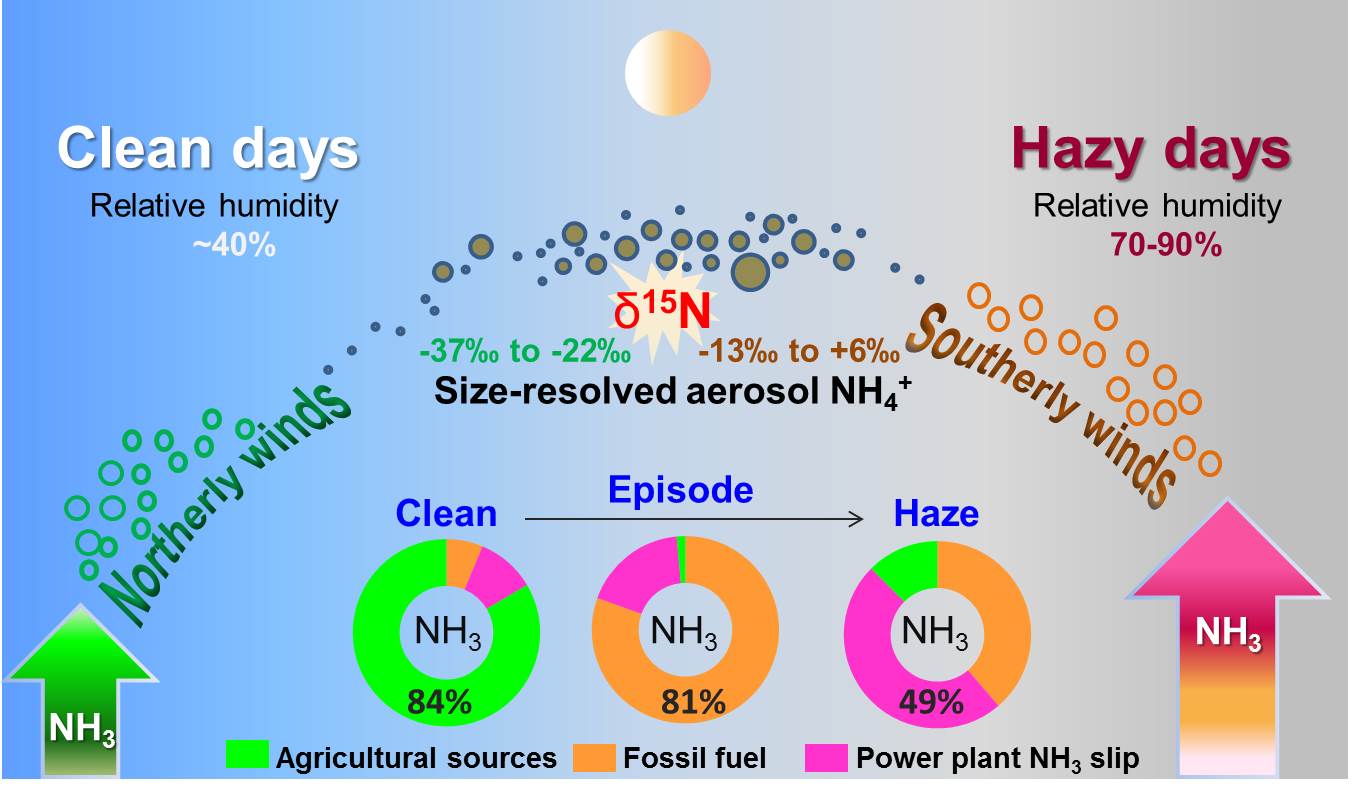Fossil Fuel Combustion-related Emissions Dominate Atmospheric Ammonia Sources during Severe Haze Episodes
Date:2016-07-12
The reduction of ammonia (NH3) emissions is urgently needed due to its role in aerosol nucleation and growth causing haze formation during its conversion into ammonium (NH4+). However, the relative contributions of individual NH3 sources are unclear, and debate remains over whether agricultural emissions dominate atmospheric NH3 in urban areas.

Source apportionment of aerosol NH4+ under clean and haze conditions. (Image Credit: PAN Yuepeng)
In a recent publication in Environmental Science & Technology (2015 Impact Factor: 5.393), Dr. PAN Yuepeng from a research group led by Prof. WANG Yuesi in the Institute of Atmospheric Physics (IAP), Chinese Academy of Sciences, and coauthors presented the first isotopic evidence that fossil fuel emissions and NH3 slip from power plants are more important than agricultural sources during haze pollution periods in urban Beijing.
Based on the chemical and isotopic measurements of size-resolved aerosols in urban Beijing, China, they find that the natural abundance of 15N (expressed using δ15N values) ofNH4+ in fine particles varies with the development of haze episodes, ranging from -37.1‰ to -21.7‰ during clean/dusty days (relative humidity: ~40%), to-13.1‰ to +5.8‰ during hazy days (relative humidity: 70-90%). After accounting for the isotope exchange between NH3 gas and aerosol NH4+, the δ15N value of the initial NH3 during hazy days is found to be -14.5‰ to -1.6‰ (Figure 1), which indicates fossil fuel-based emissions.

Figure 1 The δ15N values of aerosol NH4+ and the initial δ15N-NH3 values in air against the NH3 emission signatures of individual sources. (Image Credit: PAN Yuepeng)
"These emissions contribute 90% of the total NH3 during hazy days in urban Beijing." Dr. PAN concluded, “Our work demonstrates the analysis of δ15N values of aerosol NH4+ to be a promising new tool for partitioning atmospheric NH3 sources, providing policy makers with insights into NH3 emissions and secondary aerosols for regulation in urban environments.”
The research was supported by the National Natural Science Foundation of China (NSFC), the CAS Strategic Priority Research Program and etc.
Contact: Prof. WANG Yuesi (wys@mail.iap.ac.cn) and Dr. PAN Yuepeng (panyuepeng@mail.iap.ac.cn)
Citation: Pan et al., 2016. Fossil fuel combustion-related emissions dominate atmospheric ammonia sources during severe haze episodes: Evidence from 15N-stable isotope in size-resolved aerosol ammonium. Environmental Science & Technology. DOI: 10.1021/acs.est.6b00634, http://pubs.acs.org/doi/abs/10.1021/acs.est.6b00634
